The Mirror
EditorialAboutA+a Study CentreA+a ArchiveShopClose Menu
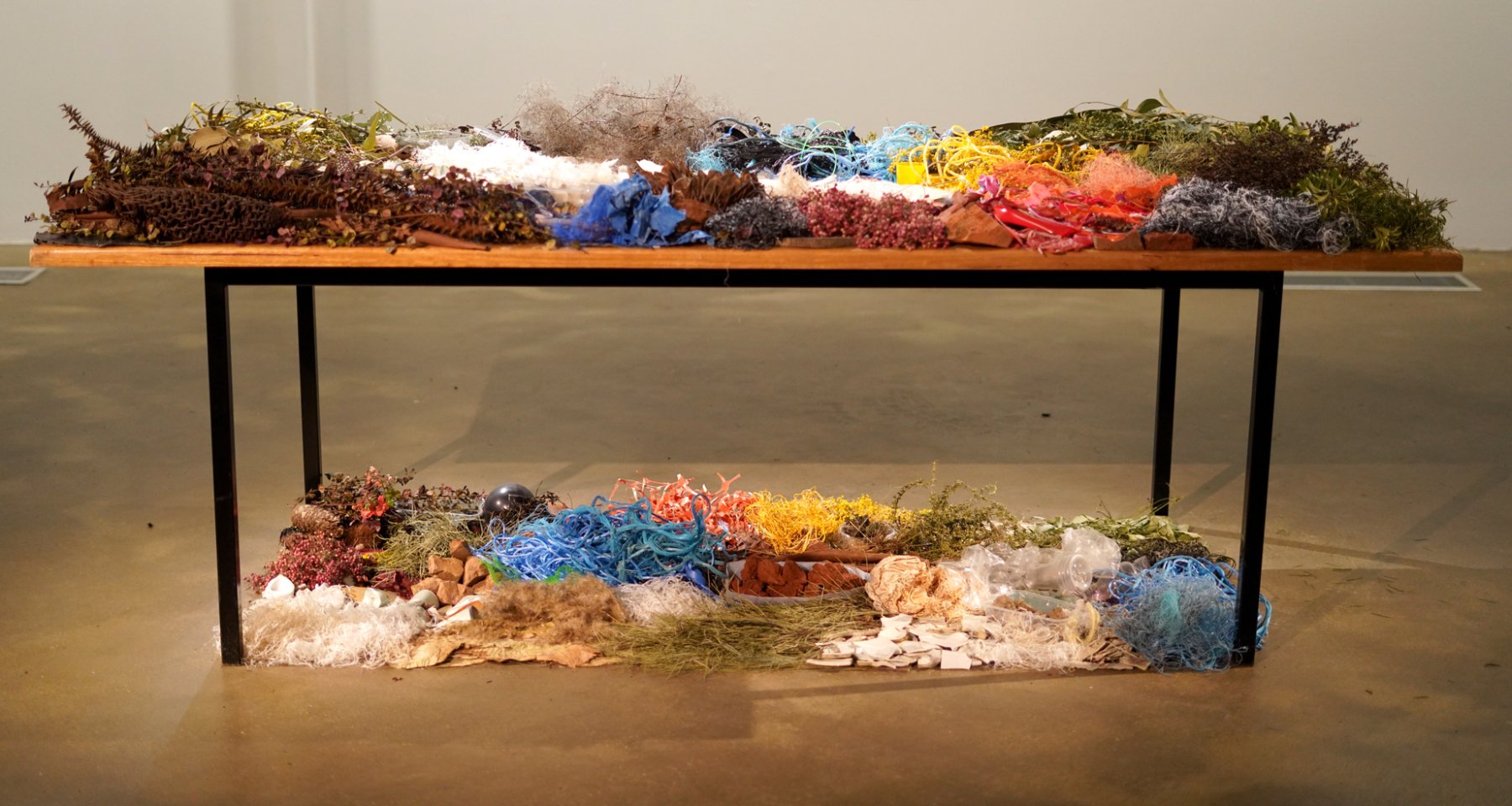
As Lauren Berkowitz was leaving the Dookie campus a few days’ earlier, she requested that I take on the task of deinstalling her sculpture Remnants so that some other people could see the work over the days in-between. I agreed and was promptly handed a suite of paper bags of varying sizes and a marker pen. Sure thing, I can do this. After all, I’m an art historian, an art expert, this won’t be a problem.
Each material should have its own bag; Please label each bag indicating its position in the sculpture; The white broken crockery could go into the plastic cookie containers; All the glass could go into the large humus container I left in the house; The yellow lid is part of the artwork; Perhaps mark bags from the table with a (T) and from the floor with a (F); Good luck.

I had been looking at the sculpture on and off for a week, since I’d arrived back at the workshop to find it taking magnificent shape. Lauren Berkowitz was undertaking a pilot residency program I managed at the Dookie campus of the University of Melbourne, on Yorta Yorta Country. On a day at the beginning of April (autumn in Australia), I had settled her in with some light introductions and brief tours, before unceremoniously leaving her to find her own way through the various spaces, activities and fluctuating rhythms of the working farm campus.
Her account of this experience is offered in a diary here.
Her sculpture Remnants was born out of wanderings, saunterings and examinations across the farm and its surrounds. The artist identified precious objects in the form of buds, leaves, fluffy bundles and plastic detritus as she walked around the campus. What she made with these objects is surprising in both its beauty and its severity.
...When spending time with the finished work, it radiates a playfulness into the space in which it stands. During its first installation, the countless textures and gradience of colours positively springs out of the browny-grey wood and concrete of the workshop at Dookie. And yet, through its perfectly arranged beauty, it also projects a force of revealed honesty that is somehow horrifying, like the flower garlands in Ari Astar’s 2019 folk horror film Midsommar.1
As I started the process of deinstalling the sculpture—separating out gum leaves from sections of eroded tarp, feathers from torn rope, sheep’s fleece from tiny parts of old plastic bottles, from native plant seeds, from almost imperceptible strands of fine plastic—I was frustrated and shocked beyond words. This was a mess. This was the mess we were in. It was absolutely impossible to separate out all the pieces because in the week or so that they had been installed as a complete work, the objects had become woven into each other simply through their coexistence. While the artist had selected each item individually from the farm environment—with care and immense attention—she had reintroduced them into a new environment that once again enmeshed the individual components into a totality. The little hooks in the root systems of a dead plant and the fine, grippy texture of the ragged plastic wanted to be together, it seemed. Not through a conscious drive, perhaps, but simply because they are part of a holistic materiality of existence that is unable to be categorised into the synthetic and the biological.
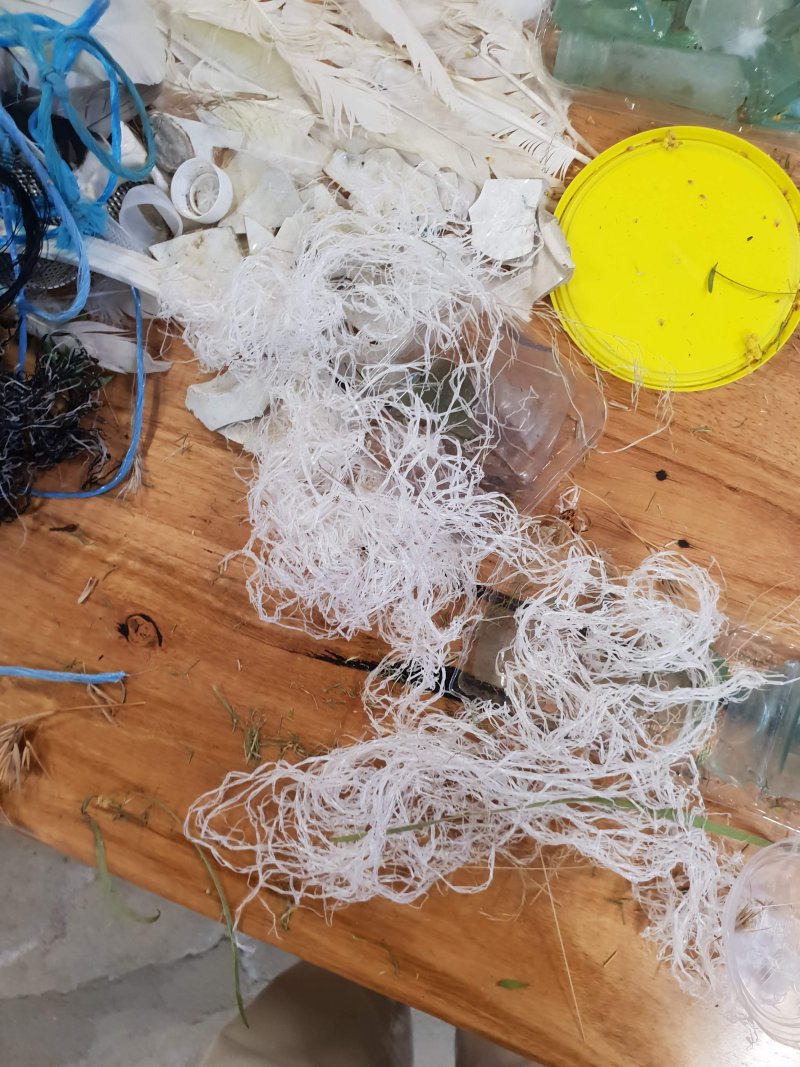
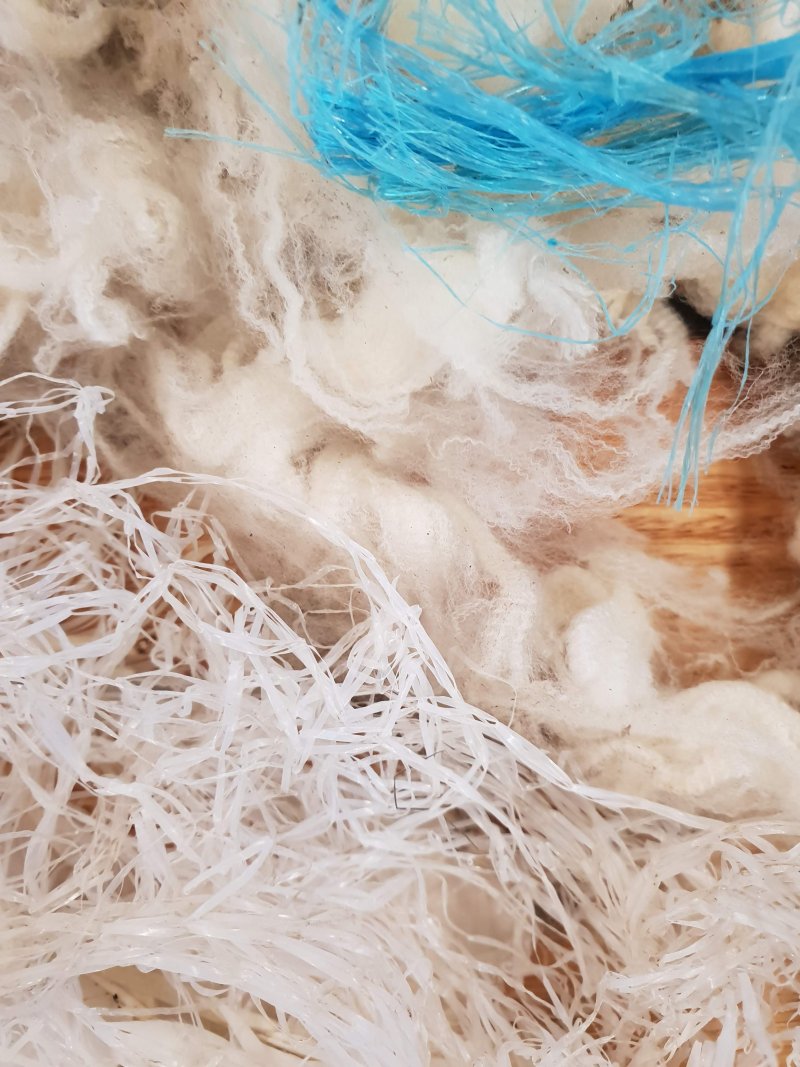
Compare a microscopic image of soil and a macroscopic image of a patch of land beside the road; different magnitudes of vision, but in both representations we find a microcosm that declares ‘going out to be in nature’ a harmful exercise in delusion. Soils and grasses, plastics and chemicals, all foundationally natural materials, but some made unwieldy and dangerous (and, it has to be said, useful) through human efforts. Each of the sprigs, strands and objects comprising Remnants tell a complex and ongoing story in their own right, with the collection then telling a bigger story of the environment in which the sculpture was made.
On one of her walks around the agricultural campus, Lauren finds a Winsor & Newton ceramic paint pot lid, which later finds its way into her sculpture. The ceramic object tells that painters have been there. It also tells that human exercises in representation are imbedded in the environment and that our drive to represent ourselves has left its mark on the planet. Our art is ecologically impactful.
In a documentary from 2008 titled Examined Life, the brilliant Astra Taylor films Slovenian philosopher Slavoj Žižek wandering around a garbage collection site in London wearing a vivid orange vest and talking about ecology, which Žižek posits may end up being the new 'opium for the masses.'2 After critiquing what he sees as the ideological overtures through which ecological discourse proclaims the human as 'rooted in nature'—and suggesting that we all feast on a discarded muffin in an equally discarded bar fridge at the tip—Žižek crescendos his reflections towards an extraordinary announcement: 'to recreate … aesthetic dimension in trash itself, that’s the true love of the world.” According to Žižek, “a true ecologist loves all this {as he gestures towards an enormous mound of miscellaneous trash}.'
While I continue to argue some points with Žižek in my mind—a not unfamiliar practice for cultural theory enthusiasts the world over—his provocations in this documentary ring true to me. The idealisation of nature as something we can escape to, frolic in or reconnect with—separate from all the torn-off tarp sections and ceramic paint pot lids we leave behind us—misses a vital point in our experience as planetary inhabitants. We are not experiencing a tender intimacy with the environment when we sit in fantasies of going out to be in nature—we are running away from our deepest existential fears, which can feel like a relief, certainly, but just ends up hurting us through the degrading and polluting processes we participate in outside of nature-loving fantasies.
The entangled ecological situation we currently find ourselves in is not simply one stage in a teleological process leading to redemption, at the end of which we will once again be tucked in the nook of a clean environment. By all scientific measures, it seems unlikely that we will find redemption in recycling. But perhaps, if we feel some sense of love for the world, including the mess and through individual and institutional outpourings of affection rather than neglect, we might take better care of it all.
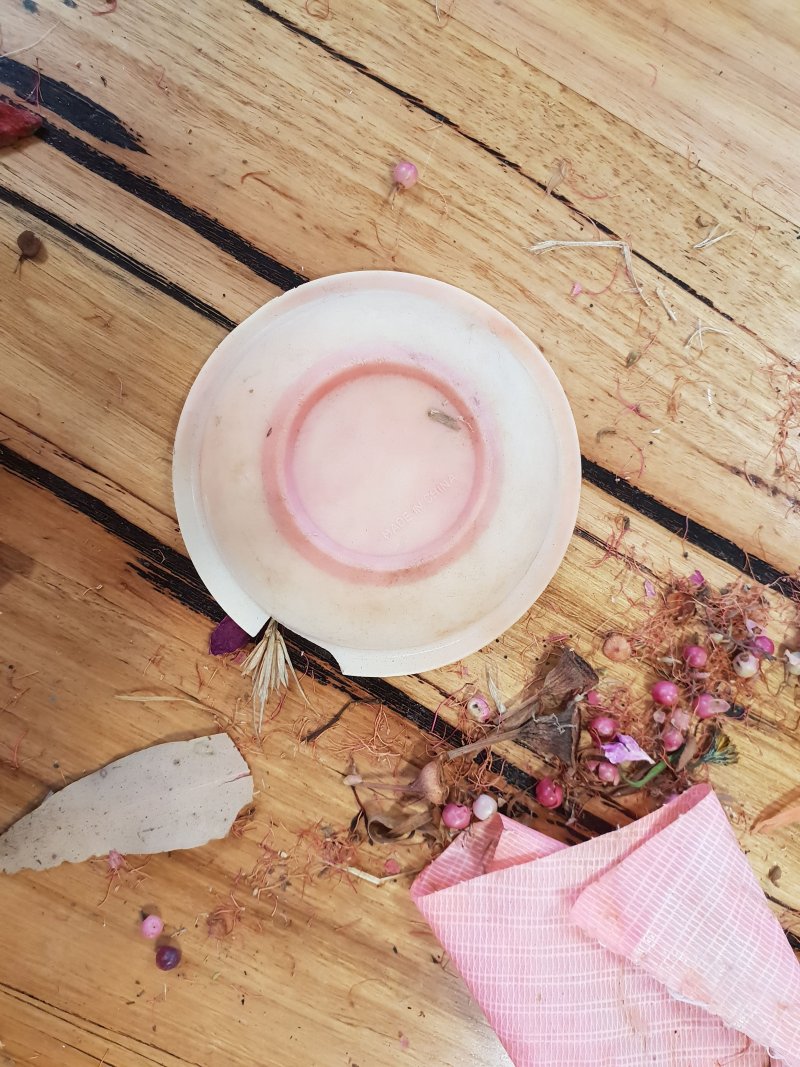
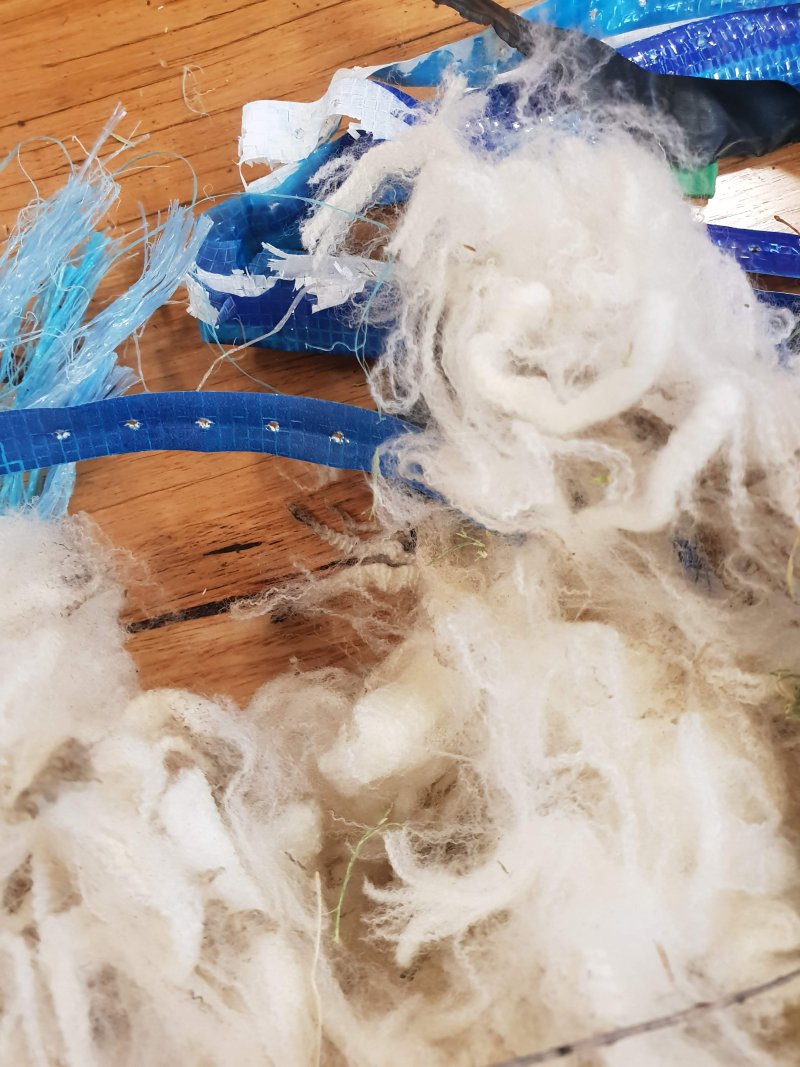
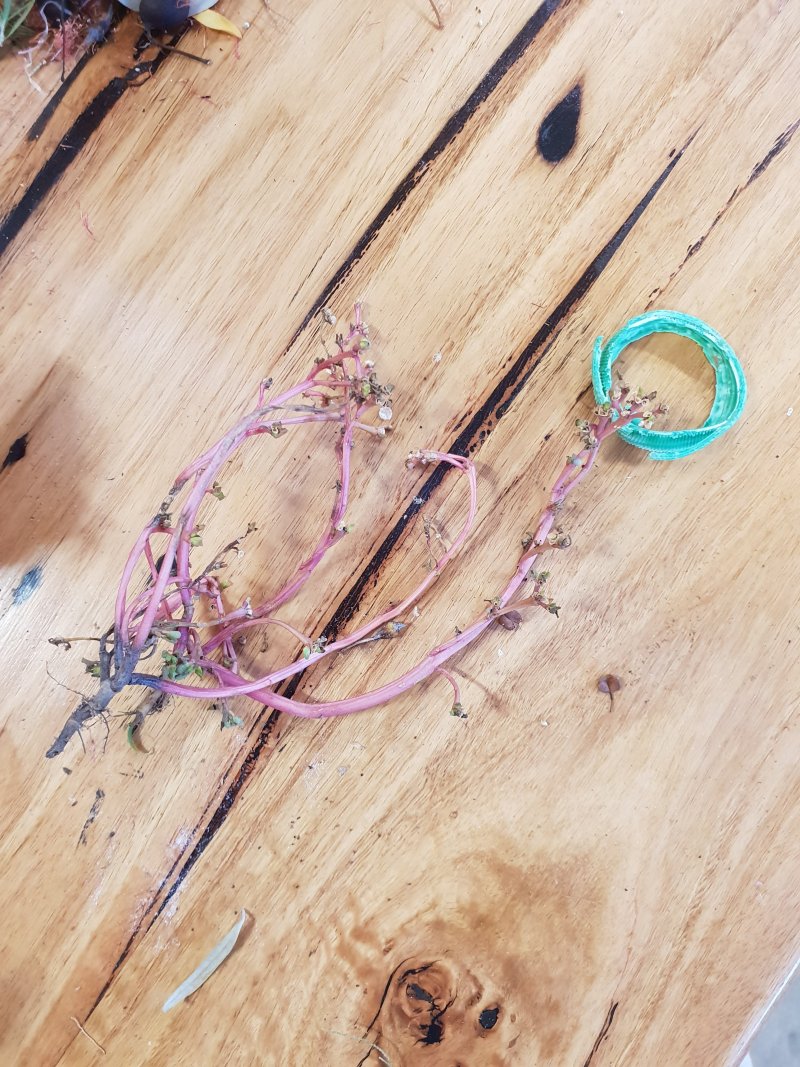
According to the French philosopher, Alain Badiou, 'Love … is a quest for truth … truth in relation to something quite precise: what kind of world does one see when one experiences it from the point of view of two and not one?'3 Badiou further notes, in his conversational treatise In Praise of Love, 'Real love is one that triumphs lastingly, sometimes painfully, over the hurdles erected by time, space and the world.'4 Coupled with Žižek’s pronouncement above, for the true ecologist then the world is both the lover and the hurdle to loving. This makes a lot of sense. It is painful to look too closely—too intimately and softly—at trash, mess and pollution. But without doing so, without this true love of the world, as Žižek puts it, we are denied the truth of the matter.
Should we all walk our paths and intimately collect the pieces of litter around us? Some people certainly do. What if we did that at a sprawling refuse site? What if we brought the refuse sites to our living rooms, not intent on hiding the mess, but embracing it as part of ourselves, part of 'the two and not the one'?5 What if we gazed with intent at piles of trash as we do at beautiful mountain ranges? I suspect we wouldn’t make any more plastics, if all the plastics ever made shared a bed with us.
I look at Remnants and, for a moment, see a fabled mirror for the twenty-first century, for the Anthropocene, sitting at the centre of our post-Enlightenment stories and hidden from sight except when sought. A mirror in which our entangled synthetic and biological existences are hypnotically reflected. In the end, I shipped a neat set of brown paper bags filled with found objects back to Lauren Berkowitz, with a few bits and pieces of different materials still connected to each other. And the botanical matter of this durational sculpture returned to the farm, to Country—to be gathered back into the work again when needed.
1. Ari Aster, Midsommar, 2019.
2. Astra Taylor, Examined Life, 2008.
3. Alain Badiou and Nicolas Truong, In Praise of Love, translated by Peter Bush, London: Serpent’s Tail, 2012, p. 22.
4. Alain Badiou and Nicolas Truong, In Praise of Love, translated by Peter Bush, London: Serpent’s Tail, 2012, p. 32.
5. Alain Badiou and Nicolas Truong, In Praise of Love, translated by Peter Bush, London: Serpent’s Tail, 2012, p. 22.
Author/s: Suzanne Fraser
Suzanne Fraser. “Deinstalling Lauren Berkowitz's 'Remnants', A Partially Successful Disentanglement.” Art and Australia.com https://artandaustralia.com/A__A/p164/a-partially-successful-disentanglement
Art + Australia Editor-in-Chief: Su Baker Contact: info@artandaustralia.com Receive news from Art + Australia Art + Australia was established in 1963 by Sam Ure-Smith and in 2015 was donated to the Victorian College of the Arts at the University of Melbourne by then publisher and editor Eleonora Triguboff as a gift of the ARTAND Foundation. Art + Australia acknowledges the generous support of the Dr Harold Schenberg Bequest and the Centre of Visual Art, University of Melbourne. @Copyright 2022 Victorian College of the Arts The views expressed in Art + Australia are those of the contributing authors and not necessarily those of the editors or publisher. Art + Australia respects your privacy. Read our Privacy Statement. Art + Australia acknowledges that we live and work on the unceded lands of the people of the Kulin nations who have been and remain traditional owners of this land for tens of thousands of years, and acknowledge and pay our respects to their Elders past, present, and emerging. Art + Australia ISSN 1837-2422
Publisher: Victorian College of the Arts
University of Melbourne
Editor at Large: Edward Colless
Managing Editor: Jeremy Eaton
Art + Australia Study Centre Editor: Suzie Fraser
Digital Archive Researcher: Chloe Ho
Business adviser: Debra Allanson
Design Editors: Karen Ann Donnachie and Andy Simionato (Design adviser. John Warwicker)
University of Melbourne ALL RIGHTS RESERVED
